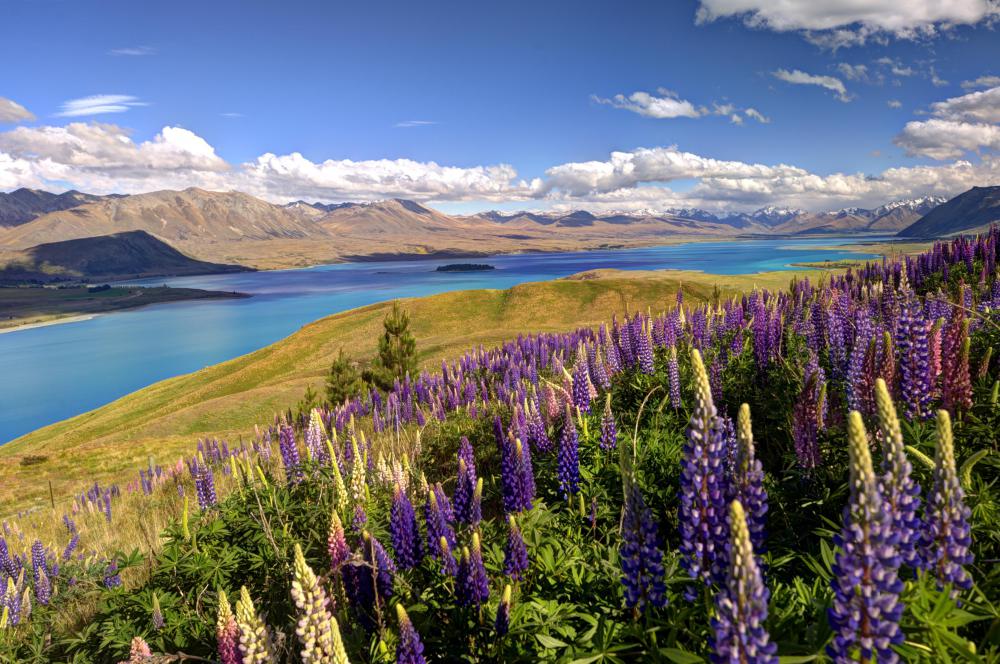At AllThingsNature, we're committed to delivering accurate, trustworthy information. Our expert-authored content is rigorously fact-checked and sourced from credible authorities. Discover how we uphold the highest standards in providing you with reliable knowledge.
What are Some Animals in New Zealand?
New Zealand, located about 2000 km (1250 mi) southeast from Australia, has some of the most unique animals in the world. This is due to the island being large enough to sustain a large ecosystem, but sufficiently isolated that the main animals are birds and rodents, with a particular emphasis on birds. New Zealand has the most avian-centric biodiversity in the world, which was even more impressive before dozens of species went extinct due to the intervention of humans and introduced species. Fortunately, rare animals in New Zealand today are among the best-protected in the world, thanks to the government's aggressive conservation efforts in recent decades.
Endemic animals in New Zealand include the famous kiwi, dozens of species of parrots, skinks, and geckos, the tuatara, frogs, the kakapo, two species of bat, and the weta. There are many more extinct animals that once lived there, including ten species of moa, which were large flightless birds; Haast's eagle, which is the largest eagle that ever lived; adzebills, large omnivorous flightless birds related to the "Terror Birds" of South America; and at least one poorly-understood "ghost lineage" of mammals that cannot be classified as monotremes, placentals, or marsupials.

The most famous of animals in New Zealand is likely the kiwi, a small flightless bird that appears on the coat of arms of New Zealand. "Kiwi" is also a colloquial term for a New Zealander. Kiwis are ratites, like ostriches, but they are just the size of a chicken, making them the smallest living ratites by a large margin. Kiwis have a long, thin beak that they use to probe in the ground for insects. Throughout most of New Zealand, where kiwis are at threat from introduced predators, they are shy and nocturnal, rarely being seen.

Other unique animals in New Zealand are the kakapo, a flightless parrot, and the New Zealand wrens, which are believed to have branched off from other passerine birds more than 80 million years ago, when New Zealand first became an isolated land mass. The kakapo is one of the most endangered animals in New Zealand or the world, with only 90 living individuals known. Their near-extinction is attributed to their flightless nature and loud mating calls, which made evolutionary sense until the recent introduction of mammalian predators such as cats. Ecological sanctuary islands have been set aside specifically for the kakapo, and the bird's population is recovering.
New Zealand is also home to one of the world's largest insects, the weta, which looks like a cross between a cockroach and a grasshopper. These insects can have a body length of 12 cm (4 in), not including their long legs and antennae. Their large size is a byproduct of their occupying ecological niches that would be occupied by rodents in other parts of the world. The largest wetas weigh more than a sparrow.
Frequently Asked Questions
What is the most iconic native animal in New Zealand?
The Kiwi, a flightless bird, stands as the most iconic native animal of New Zealand. It's a nocturnal and shy creature, symbolizing the unique wildlife of the country. The Kiwi is so emblematic that New Zealanders are often colloquially referred to as 'Kiwis' themselves.
Are there any dangerous predators native to New Zealand?
Unlike Australia, New Zealand is fortunate to have no large predatory animals. The most dangerous creatures are small, such as the native Katipo spider, which is rare and generally avoids humans. This lack of predators has allowed many flightless birds and insects to thrive in a relatively safe environment.
What are some of the unique reptiles found in New Zealand?
New Zealand is home to several unique reptiles, including the Tuatara, which is often called a "living fossil" due to its ancient lineage. It's the only surviving member of an order that flourished around 200 million years ago. Additionally, there are numerous species of geckos and skinks that are endemic to the country.
How has New Zealand's isolation affected its wildlife?
New Zealand's long-term geographic isolation has led to the evolution of a distinctive and diverse fauna, characterized by high levels of endemism. Around 80% of the terrestrial birds, all the freshwater fish, and most of the insects and plants are endemic, meaning they are found nowhere else in the world.
What conservation efforts are in place to protect New Zealand's wildlife?
New Zealand has implemented robust conservation efforts, including predator-free sanctuaries and extensive pest control programs to protect its unique wildlife. The Department of Conservation (DOC) actively manages over a third of the country's land area, focusing on habitat protection, species translocation, and ecological restoration projects.
Can you find any non-native animals in New Zealand?
Yes, there are several non-native animals in New Zealand, introduced by humans. These include mammals like rabbits, possums, and stoats, which have become invasive species, threatening the native biodiversity. Efforts are ongoing to control these populations to protect the indigenous flora and fauna.
AS FEATURED ON:
AS FEATURED ON:












Discussion Comments
Wow, I learned something new today. I never knew that New Zealand had the most avian-centric biodiversity in the world. I never really thought about what types of animals call New Zealand home. What I think of most are animals like platypus, fur seals, and other aquatic animals in or around the islands. Now I want to move my New Zealand trip higher up on my bucket list because there are so many unique things about the place.
I've never heard of most of the animals mentioned in this article. They are pretty cool!
Post your comments